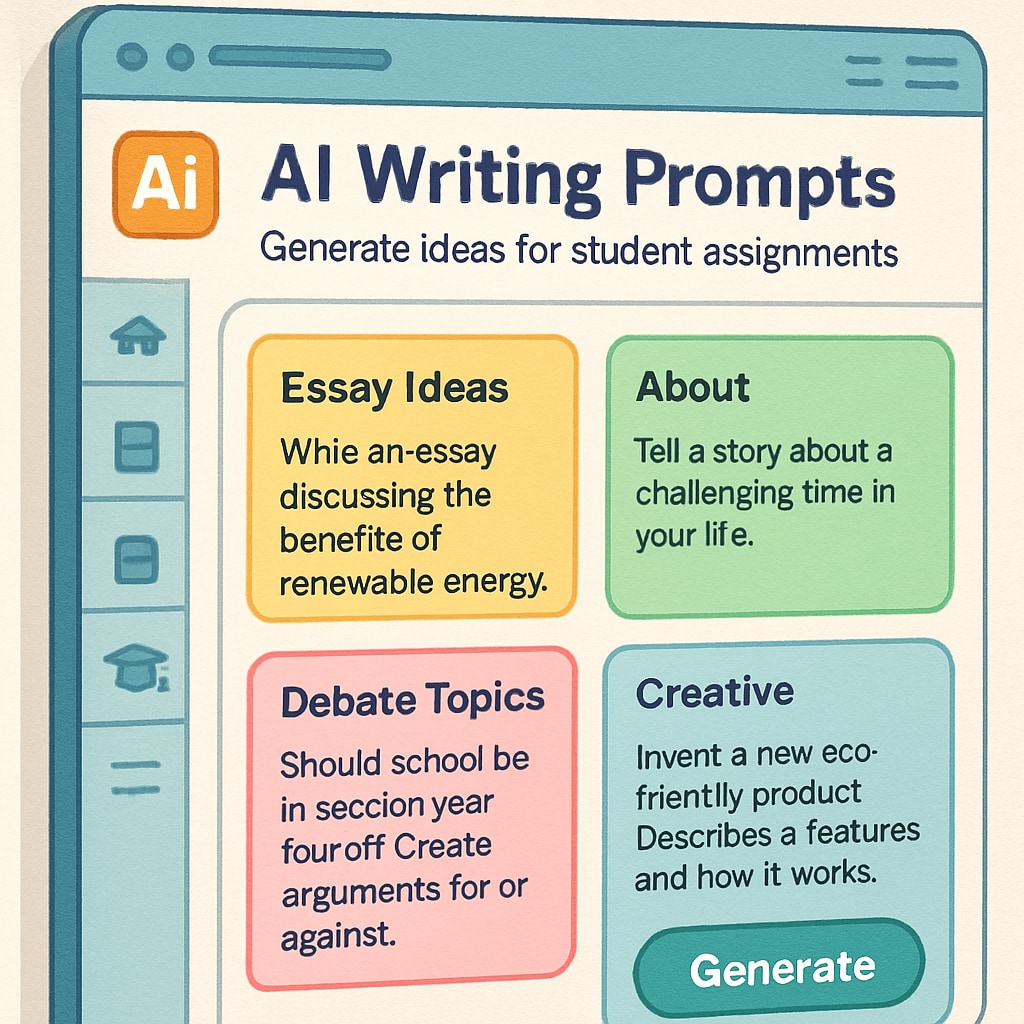In the digital age, media literacy and critical thinking have become essential skills for students. By integrating AI writing prompts, media literacy, and teaching resources, educators can provide innovative ways to help grades 9-12 students analyze, understand, and create digital media. This article explores how AI-powered tools can enhance classroom learning and shares a free role-based AI writing prompt package designed to foster critical thinking and media literacy.
Why Media Literacy and Critical Thinking Matter
Media literacy is the ability to critically evaluate, interpret, and create media content, while critical thinking enables logical reasoning and problem-solving. In today’s information-rich environment, students face challenges such as misinformation, biased reporting, and the influence of social media. Teaching these skills helps students navigate the digital world responsibly and effectively.
AI tools can play a pivotal role in this process. They allow educators to simulate real-world scenarios, challenge students to think from different perspectives, and encourage creativity in how they approach complex problems.

Using AI Writing Prompts to Foster Media Literacy
AI writing prompts offer dynamic ways to engage students in media literacy exercises. These prompts can simulate roles such as journalists, social media influencers, or ethical content creators, helping students understand the nuances of media production and analysis. For example:
- Role-based Prompts: “Imagine you are a journalist covering a controversial topic. How would you ensure unbiased reporting?”
- Analytical Prompts: “Analyze the credibility of a viral news article. What evidence supports or contradicts its claims?”
- Creative Prompts: “Design an infographic that promotes digital safety for teenagers.”
These prompts encourage critical thinking while helping students develop practical media skills. AI tools can also provide instant feedback, making the learning process more efficient and interactive.

Free Role-Based AI Writing Prompt Package for Educators
To support teachers, a free role-based AI writing prompt package is available. This resource includes prompts tailored to various media roles, such as:
- Journalist: Focused on unbiased reporting and fact-checking.
- Social Media Influencer: Highlighting responsible content creation and audience engagement.
- Ethical Reviewer: Analyzing the moral implications of advertisements and media campaigns.
Educators can integrate these prompts into lesson plans, group activities, and individual assignments. For example, students can role-play different media professionals to better understand the challenges and responsibilities of each role.
In addition, AI tools can analyze student responses, providing insights into their reasoning and areas for improvement. This makes it easier for educators to tailor feedback and track progress over time.
Benefits of AI in Modern Classrooms
Integrating AI tools into classrooms offers several advantages:
- Personalized Learning: AI can adapt prompts to match students’ skill levels and interests.
- Efficiency: Instant feedback reduces grading time and enhances student engagement.
- Real-World Skills: Students gain practical experience in analyzing, interpreting, and creating media.
- Global Perspectives: Role-based prompts often include scenarios that encourage cross-cultural understanding.
For educators looking to enhance their teaching resources, AI-powered prompts provide an accessible and impactful solution.
Preparing Students for the Digital Future
As technology continues to shape society, equipping students with media literacy and critical thinking skills is more important than ever. AI writing prompts empower educators to create engaging lessons that encourage students to think critically, analyze media responsibly, and express their ideas creatively.
By leveraging free AI tools and resources, schools can foster a generation of informed, thoughtful, and ethical digital citizens. The future of education lies in embracing innovation, and AI is a valuable tool in achieving this goal.
Readability guidance: Use short paragraphs and bullet points to summarize key ideas. Limit passive voice while ensuring smooth transitions using words like “however,” “therefore,” and “for example.” Regularly incorporate examples to illustrate concepts.


